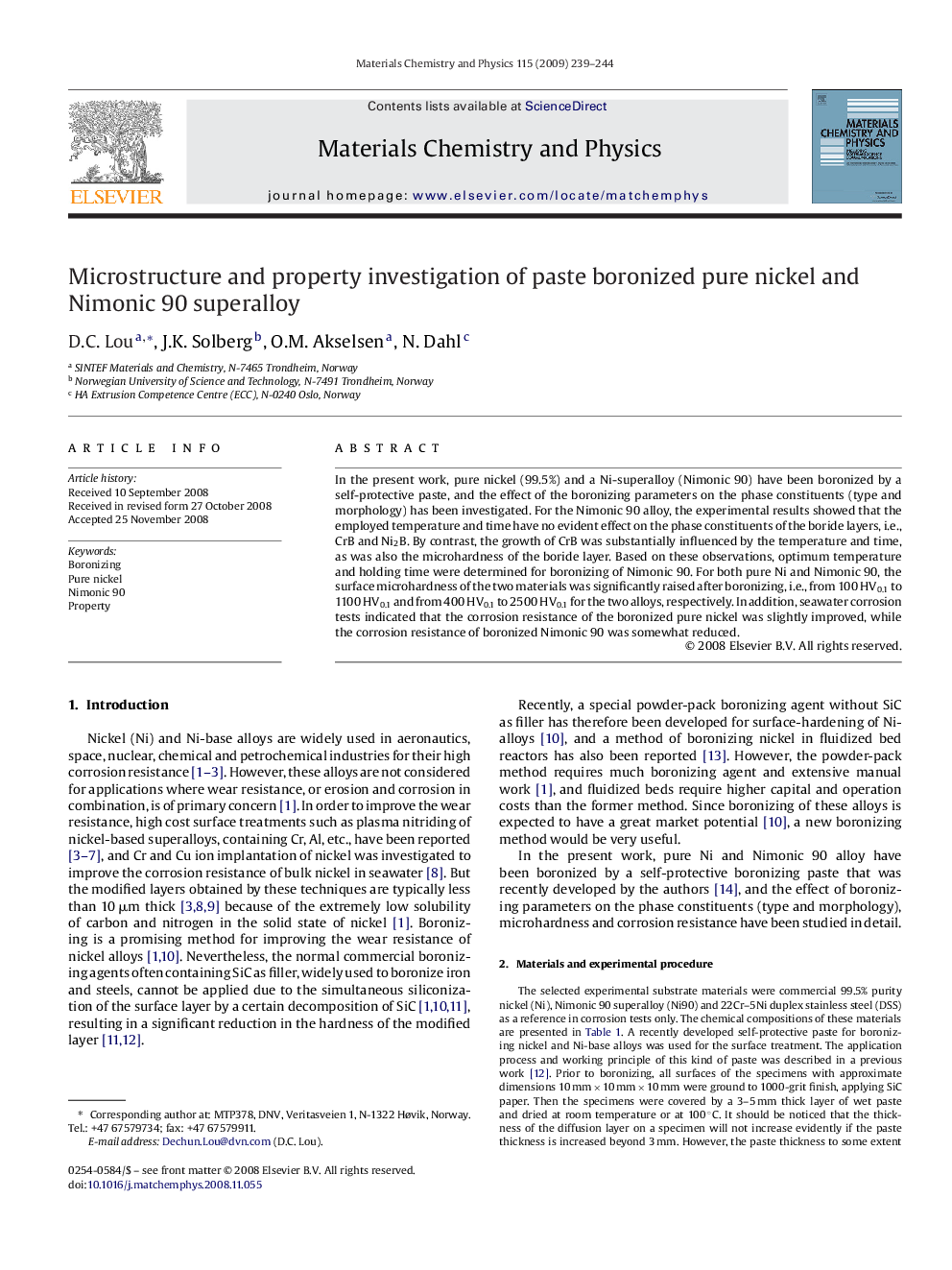| Article ID | Journal | Published Year | Pages | File Type |
|---|---|---|---|---|
| 1525555 | Materials Chemistry and Physics | 2009 | 6 Pages |
In the present work, pure nickel (99.5%) and a Ni-superalloy (Nimonic 90) have been boronized by a self-protective paste, and the effect of the boronizing parameters on the phase constituents (type and morphology) has been investigated. For the Nimonic 90 alloy, the experimental results showed that the employed temperature and time have no evident effect on the phase constituents of the boride layers, i.e., CrB and Ni2B. By contrast, the growth of CrB was substantially influenced by the temperature and time, as was also the microhardness of the boride layer. Based on these observations, optimum temperature and holding time were determined for boronizing of Nimonic 90. For both pure Ni and Nimonic 90, the surface microhardness of the two materials was significantly raised after boronizing, i.e., from 100 HV0.1 to 1100 HV0.1 and from 400 HV0.1 to 2500 HV0.1 for the two alloys, respectively. In addition, seawater corrosion tests indicated that the corrosion resistance of the boronized pure nickel was slightly improved, while the corrosion resistance of boronized Nimonic 90 was somewhat reduced.
